CalCOFI at 75
A California science gem is cutting-edge but still devoted to the fundamentals
Published Date
Story by:
Media contact:
Share This:
Article Content
Seventy-five years ago, a group of California scientists was tasked with a mission.
The state’s sardine fishery had been a backbone of California’s economy through the 1940s. Famed author John Steinbeck once wrote that sardines schooled “in silvery billions and money ran almost as freely.” In 1945, when those words were published in his novel Cannery Row, the sardine catch off the California coast was 440,000 tons.
That was already a drop-off of nearly half from annual catches in the 1930s, but it was going to get worse. In 1947, the catch was only 143,000 tons. Jobs and profits diminished accordingly.
California’s Department of Natural Resources responded to the crisis by assembling researchers from the California Academy of Sciences, the state Department of Fish and Game, Scripps Institution of Oceanography and the U.S. Fish and Wildlife Service.
The scientists responded by initiating an ambitious survey on a quest to find out what happened to the sardine. They would record ocean conditions off the U.S. West Coast by sending research vessels to various points along a grid in zigzag fashion. At each station, researchers made measurements of water temperature and salinity, counts of fish, fish larvae zooplankton and phytoplankton and other ecological variables. They would return to these stations, more than 100, first every month, then every quarter to repeat the process. They called the project the California Cooperative Oceanic Fisheries Investigations, CalCOFI for short.
Today the present roster of CalCOFI partners is celebrating the 75th anniversary of the program. The question of what happened to the sardine still is not entirely settled. The catch would bottom out at 70,000 tons by the 1970s. The culprit was likely a mix of environmental fluctuations, changing ocean conditions and harvest quantities in unknown proportions.
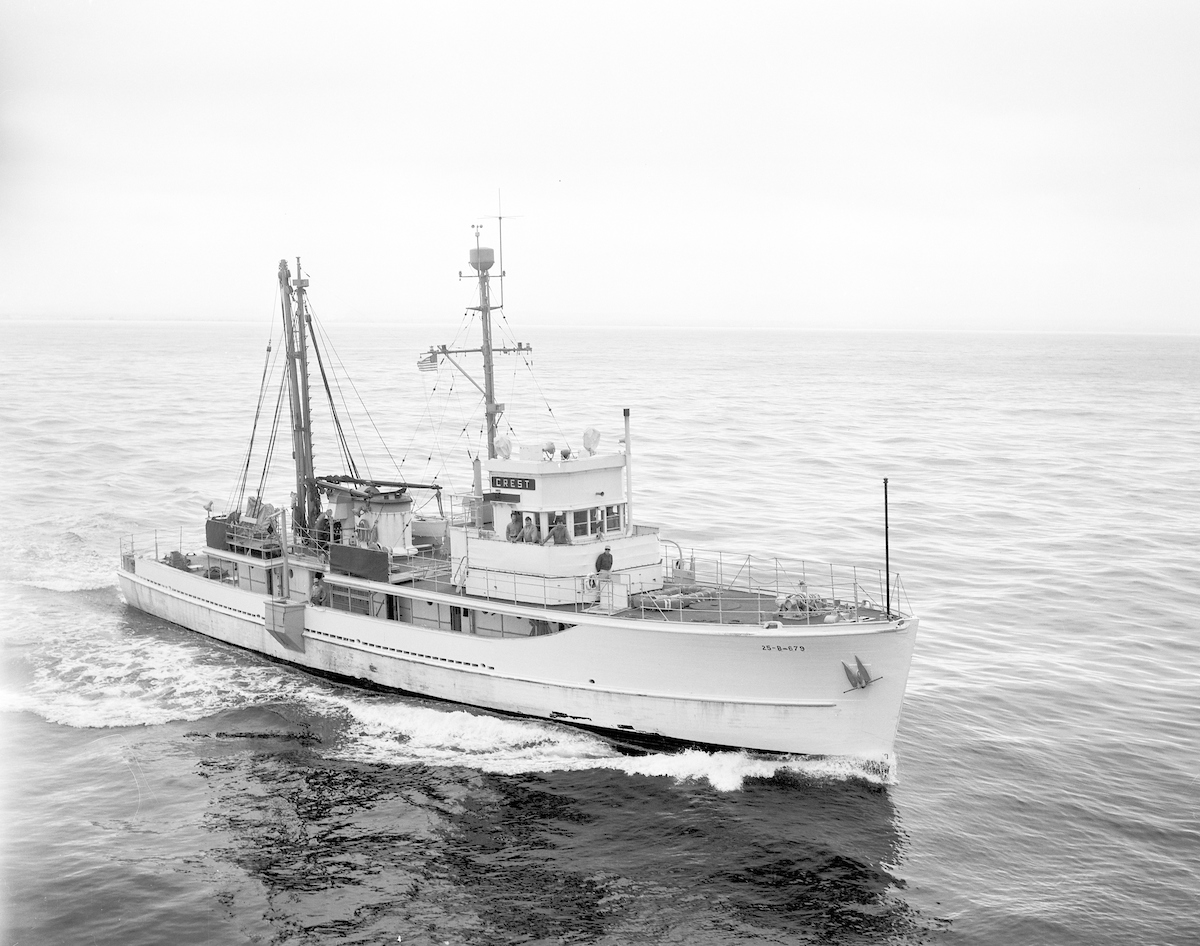
However, what the program has delivered is priceless in understanding the ocean off of California.
CalCOFI’s genius has been in discovering how hard that original question is to answer while getting scientists closer to understanding cycles that play out over decades.
CalCOFI’s genius has been in discovering how hard that original question is to answer while getting scientists closer to understanding cycles that play out over decades.
“CalCOFI is our eyes and ears under the water here in California,” said Erin Satterthwaite, CalCOFI coordinator at Scripps and California Sea Grant. “In California, we are fortunate to have the oldest marine ecosystem observing program in the world. CalCOFI, with its years of observations, has provided us with profound wisdom about our ocean.”
“In California, we are fortunate to have the oldest marine ecosystem observing program in the world. CalCOFI, with its years of observations, has provided us with profound wisdom about our ocean.”
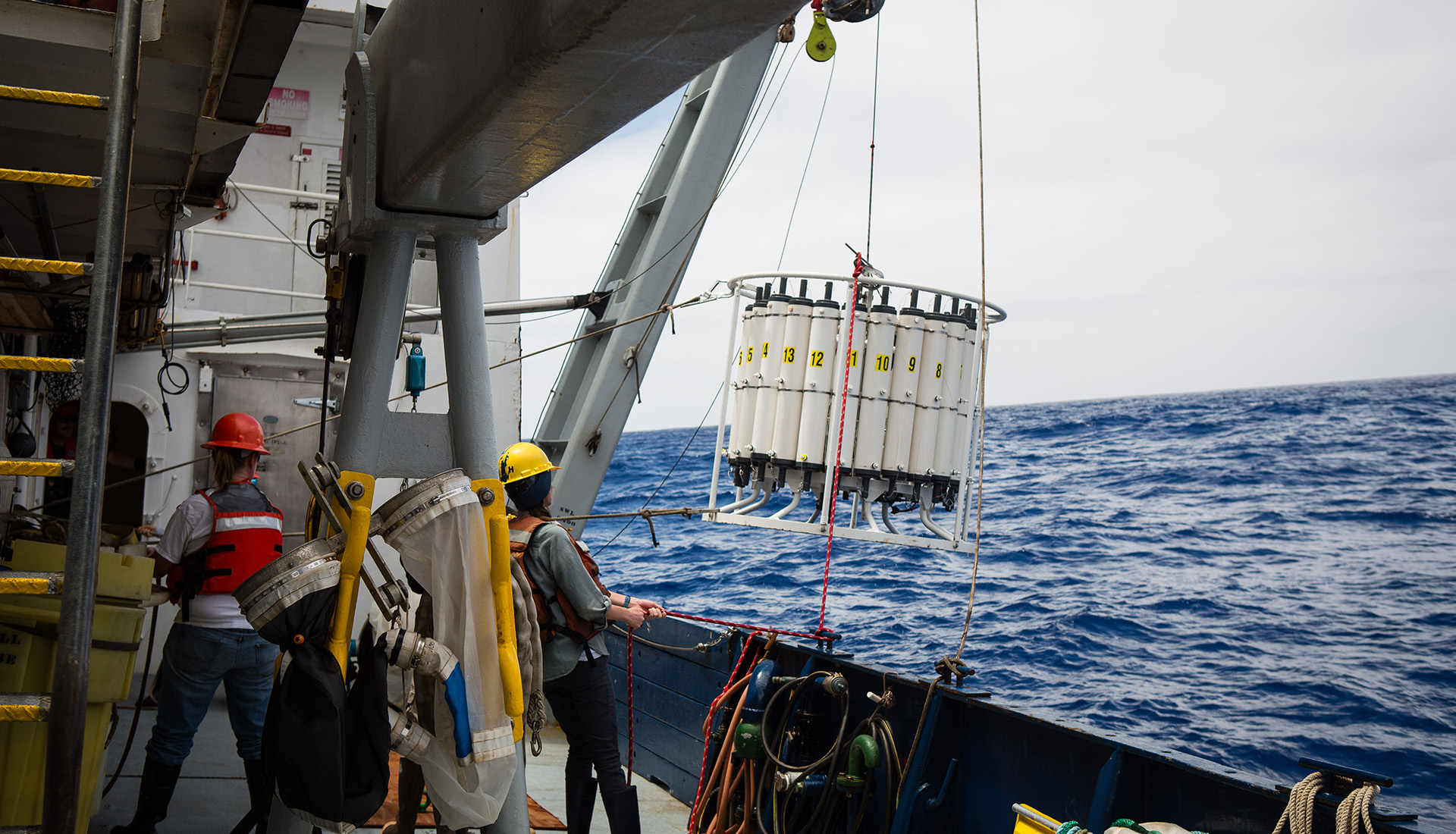
CalCOFI has contributed to science and society far beyond informing sardine management, playing a critical role in understanding and managing the California Current Ecosystem, especially in the context of climate variability and change. The “CalCOFI approach” has also been implemented to monitor change in other large marine ecosystems.
“CalCOFI has evolved over its 75-year history to provide information across a range of topics that were not necessarily conceived at its inception,” said CalCOFI Director Brice Semmens, a marine biologist at Scripps Oceanography. “CalCOFI has helped in assessing the impacts of climate variability and change, enhancing the accuracy of ocean and weather models, supporting the sustainable management of fishing and aquaculture, aiding in the siting and development of offshore renewable energy, informing conservation efforts for culturally, recreationally and commercially important species, and assessing contamination from DDT and other pollutants.”
A collaborative approach to the program has been a key part of its success.
“NOAA is proud to have been a founding partner that has financially and scientifically supported CalCOFI from the beginning,” said Kristen Koch, Director of NOAA Fisheries’ Southwest Fisheries Science Center. “The dedication and ingenuity of the scientists who have contributed to CalCOFI have made it more and more valuable by developing new and innovative ways to extract and understand the data. We need to continue that collaboration and innovation in evolving CalCOFI for it to continue supporting West Coast fisheries, communities, and the coastal economy.”
"The dedication and ingenuity of the scientists who have contributed to CalCOFI have made it more and more valuable by developing new and innovative ways to extract and understand the data."
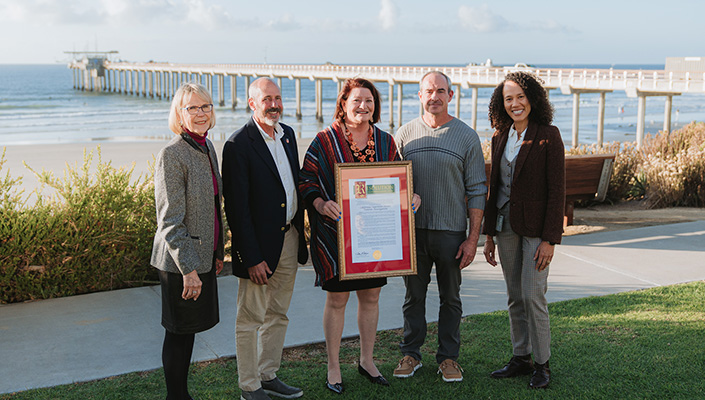
Scripps Oceanography, NOAA Fisheries and the California Department of Fish and Wildlife marked the anniversary on Nov. 18, when Senate President pro Tempore Emeritus Toni G. Atkins, a Scripps research champion, was recognized by Vice Chancellor Leinen for her years of support. This anniversary year, Atkins spearheaded a State of California resolution recognizing CalCOFI’s contributions to California.
“Critical, longstanding monitoring programs like CalCOFI are evidence of the ongoing return on investment by the state of California in cutting-edge science,” said Atkins. “Over the decades, CalCOFI has played a crucial role in protecting a key component of the state economy while being a wellspring for innovative technologies that will help protect our precious ocean’s natural resources for generations to come.”
Today the program continues to get more sophisticated to address the myriad variables that make fundamental questions difficult to answer even after decades of research.
“CalCOFI continues to help us answer questions we never envisioned when the program started,” said Noelle Bowlin, CalCOFI Program Leader at NOAA’s Southwest Fisheries Science Center. “Both NOAA and Scripps have not only collected samples during the surveys, but stored them over the decades as a kind of environmental archive. We can literally go back in time by revisiting those samples to ask new questions, take new measurements and make new discoveries that help managers make better decisions today.”
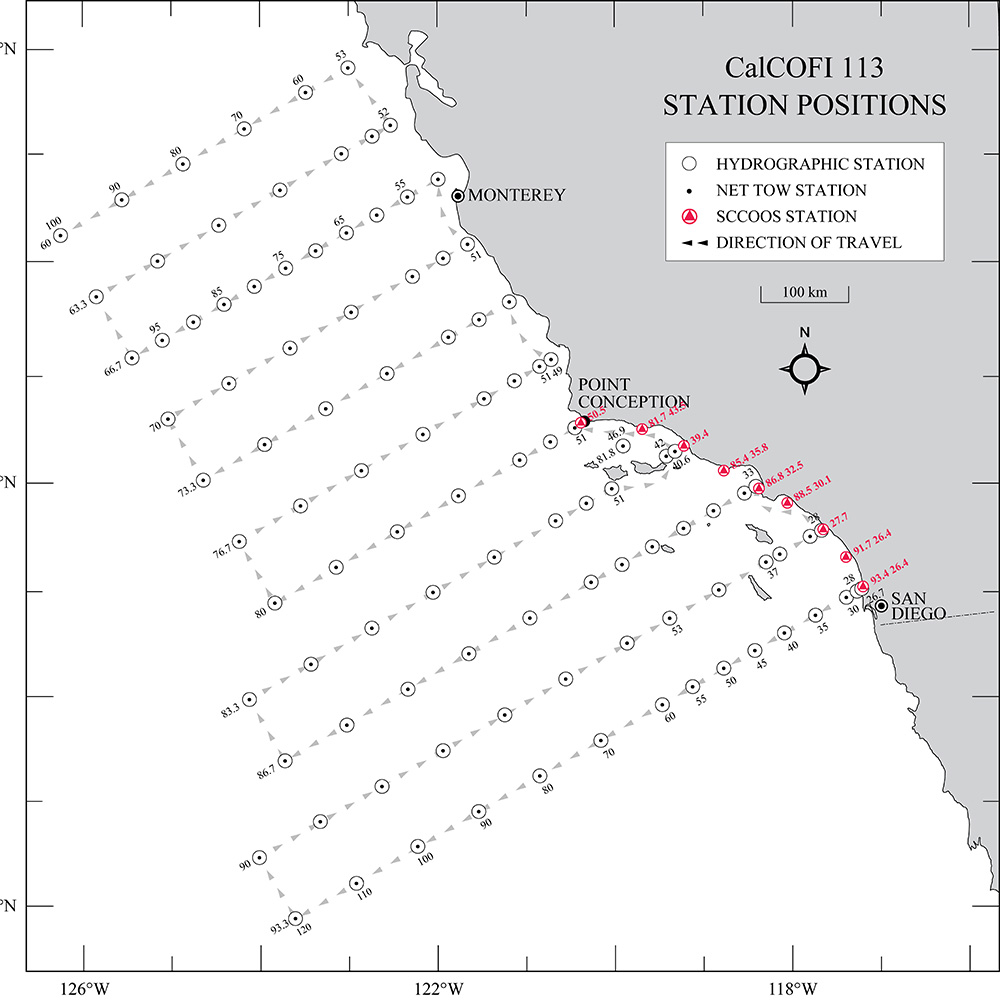
Advances in sequencing and analysis of environmental DNA, or eDNA, allow CalCOFI new ways to characterize what is living in the ocean. All organisms shed DNA into their environments. By filtering water in which animals have left behind genetic traces and sequencing the DNA from these filters, scientists can collect snapshots of marine communities. The process is similar to profiling someone’s genetic makeup using only a skin sample. It is non-invasive, meaning no organisms are hurt through the sampling process, and especially useful for detecting rare organisms that are otherwise difficult to see, hear, or capture.
In this way, CalCOFI researchers can see if endangered species or others with protected legal status are thriving or deteriorating in a given space. They can tell if invasive species with the potential to do harm are in that same space. They can get an overall picture of an ecosystem and share the results with everyone from fishers to state resource managers.
One CalCOFI project focused on detecting marine mammals has found that whales, including blue whales, can be detected using eDNA. The largest animals to ever live on Earth may now become better understood through their genetic traces. The methods being used by CalCOFI, including approaches for sample processing and data analysis, helped inform the National Aquatic eDNA Strategy recently released by the National Science and Technology Council, said CalCOFI Marine Molecular Ecology Program Coordinator Nastassia Patin.
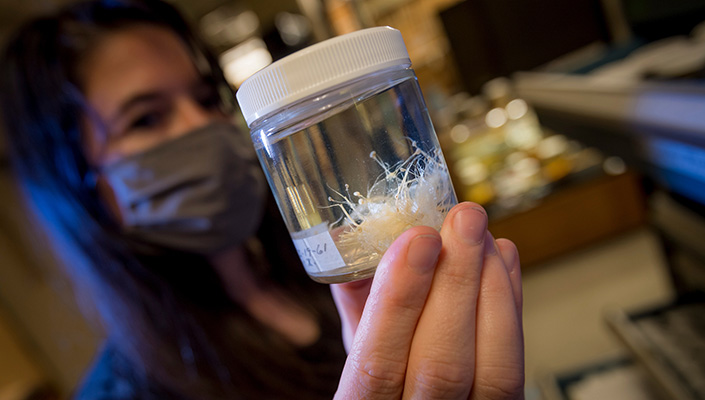
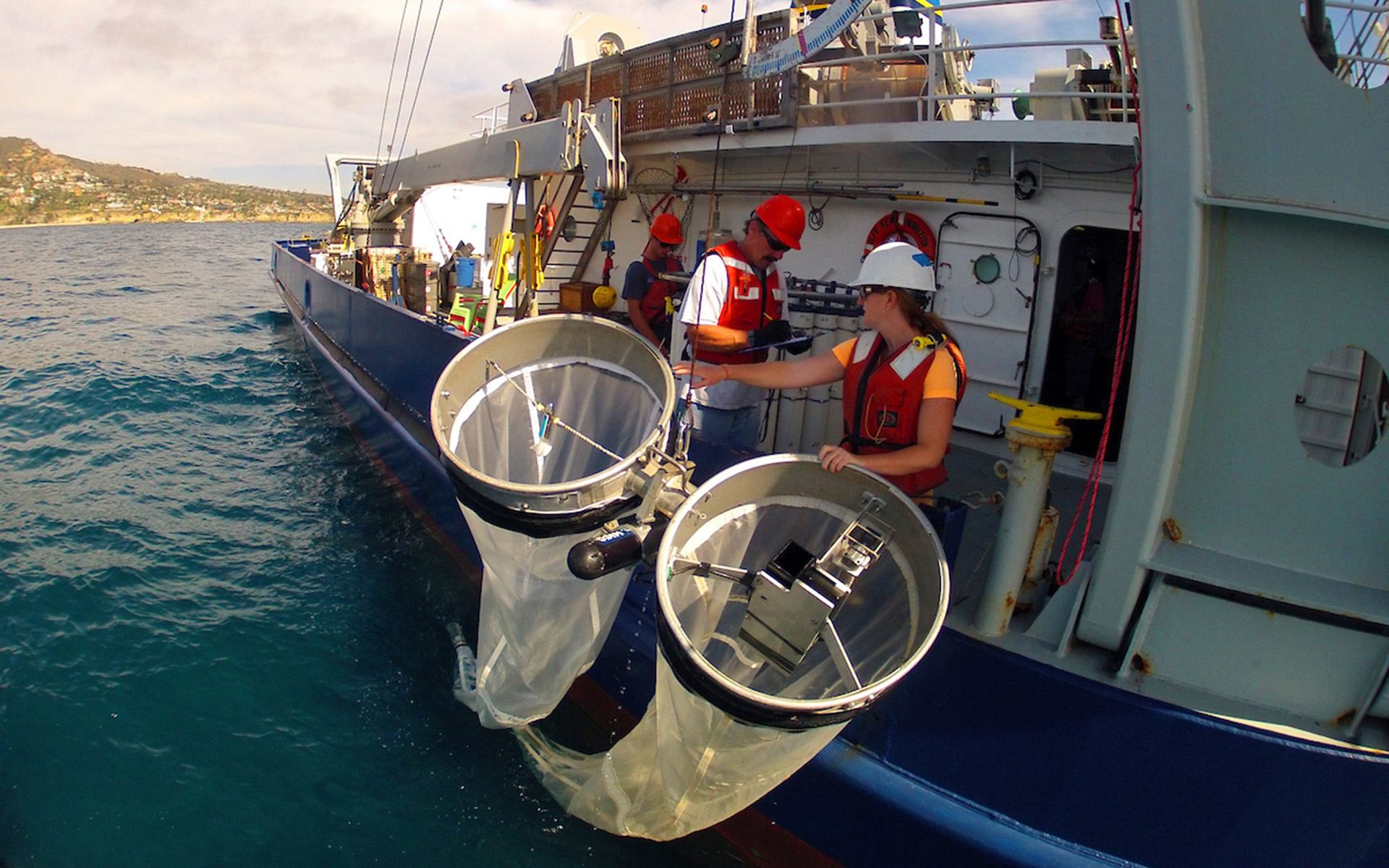
“By integrating eDNA into CalCOFI, we can super-charge the biodiversity surveys that are a core component of the program,” Patin said. “This technique opens new doors for understanding how marine communities are responding to environmental perturbations like marine heat waves, ocean acidification, and hypoxia.”
“CalCOFI helps us understand our fisheries and marine resources in an oceanographic context. It’s because of CalCOFI that we understand the global nature of El Niño and La Niña fluctuations, and can study their impacts with biological and physical data that have been collected at the same place and time,” said Julia Coates, CDFW Senior Environmental Scientist Specialist and CalCOFI Committee member. “We know that fisheries expand and decline not just because of harvest pressure, but also because of natural fluctuation in the environment, and we can only effectively study that balance with long-term monitoring data. We can’t know where we are without knowing where we’ve been.”
Perhaps just as important as the data, CalCOFI leaders say, the program continues to bring disparate science minds together to consider complex ocean mysteries. The program can take credit for popularizing the term “El Niño.” It had been at a freeform CalCOFI meeting in 1958 that scientists discovered that the climate pattern named in Peru actually affected the entire Pacific Ocean basin and, in turn, the entire world.
"California's blue economy is set to explode in the coming decade,” said Semmens. “While CalCOFI's founders never envisioned massive wind farms off of our coast, the monitoring program they started holds the key to understanding and mitigating the ecosystem impacts of these developments. Put simply, CalCOFI's historical data are the lynchpin to a responsible and productive ocean economy. Now, more than ever, California needs the ocean ecosystem observations CalCOFI provides."
Learn more about research and education at UC San Diego in: Climate Change
"California's blue economy is set to explode in the coming decade... CalCOFI's historical data are the lynchpin to a responsible and productive ocean economy. Now, more than ever, California needs the ocean ecosystem observations CalCOFI provides."
Share This:
You May Also Like
UC San Diego is Strengthening U.S. Semiconductor Innovation and Workforce Development
Technology & EngineeringStay in the Know
Keep up with all the latest from UC San Diego. Subscribe to the newsletter today.




